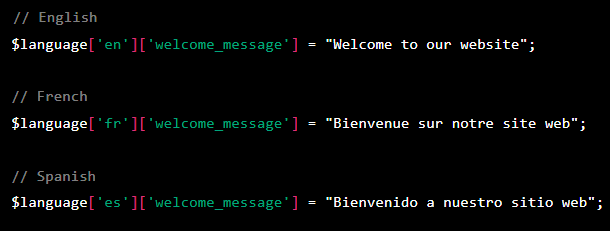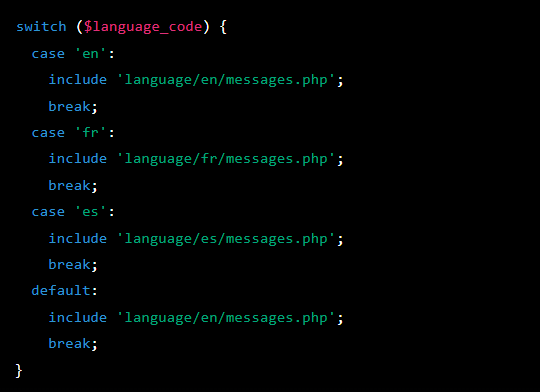A Comprehensive Guide to Adding Multi-Language Support to Your Website Using PHP.

How to Enable Multi-language Support to Website using PHP
Enabling multi-language support to a website is a great way to reach a wider audience and offer a more personalized user experience. In this blog, we’ll discuss how to implement multi-language support to a website using PHP.
- Create language files:
The first step is to create separate language files for each language that you want to support. These files should contain the text that will be displayed on your website, translated into the relevant language. Each language file should have the same structure and should be stored in a separate folder.
- Detect the user’s language:
To detect the user’s preferred language, you can use the $_SERVER[‘HTTP_ACCEPT_LANGUAGE’] variable. This variable contains a string that represents the user’s preferred language. You can then use this information to determine which language file to load.
- Load the appropriate language file:
Once you have detected the user’s preferred language, you can use PHP’s include or require statement to load the appropriate language file. You can also use a switch statement to determine which language file to load based on the user’s preferred language.
- Use variables to store translated text:
In each language file, you should use variables to store the translated text. For example, you could have a variable named $welcome_message that stores the text “Welcome to our website” in each language file. This way, you can easily access the translated text from your PHP code.
- Update the language files as needed:
As you add or update content on your website, you’ll need to update the relevant language files. This will ensure that your website remains accurate and up-to-date in multiple languages.
Here’s an example of how you can enable multi-language support to a website using PHP:
- Create language files:

In the ‘language’ folder, create separate folders for each language that you want to support. In each language folder, create a file ‘messages.php’ that will contain the translated text.
- messages.php

In each ‘messages.php’ file, create variables for each piece of translated text.
- Detect the user’s language:

Use the ‘$_SERVER[‘HTTP_ACCEPT_LANGUAGE’]’ variable to detect the user’s preferred language, then use the ‘substr()’ function to extract the first two characters, which represent the language code.
- Load the appropriate language file:

Use a ‘switch’ statement to load the appropriate language file based on the language code. If the language code doesn’t match any of the supported languages, the default is to load the English language file.
- Display the translated text:

To display the translated text, simply echo the relevant variable. In this case, the welcome message will be displayed using the following code: ‘echo $language[$language_code][‘welcome_message’];’
In conclusion, implementing multi-language support to a website using PHP is a straightforward process that can greatly enhance the user experience. By following the steps outlined above, you can easily add multi-language support to your website and reach a wider audience. This is a basic example of how to enable multi-language support to a website using PHP. You can expand on this by adding more languages, translated text, and features as needed.